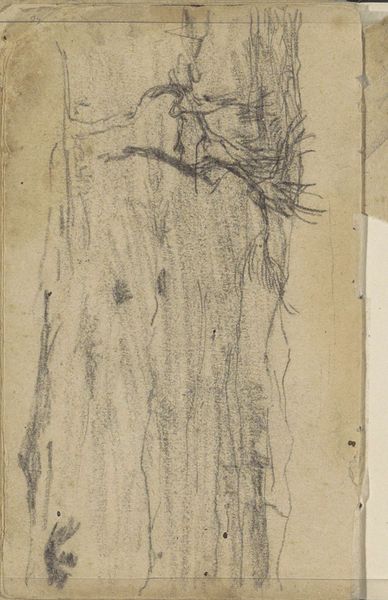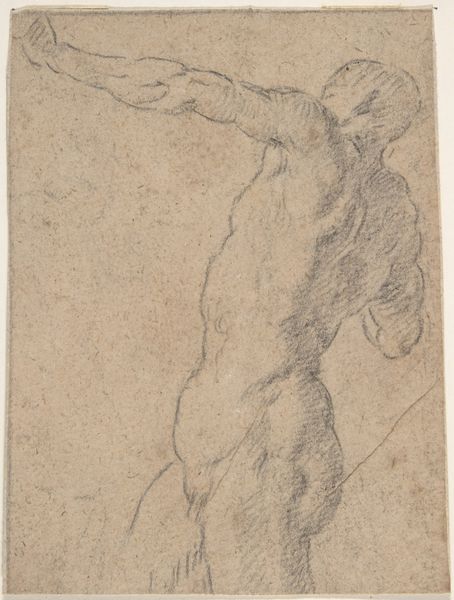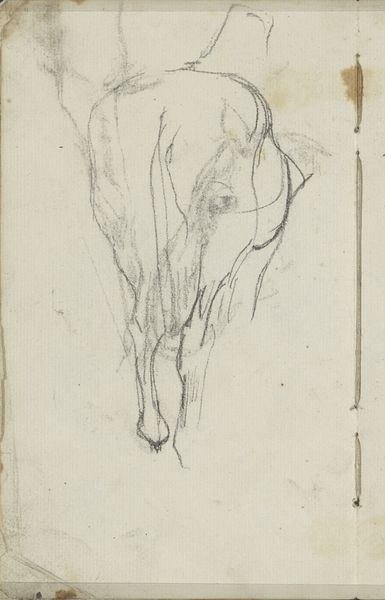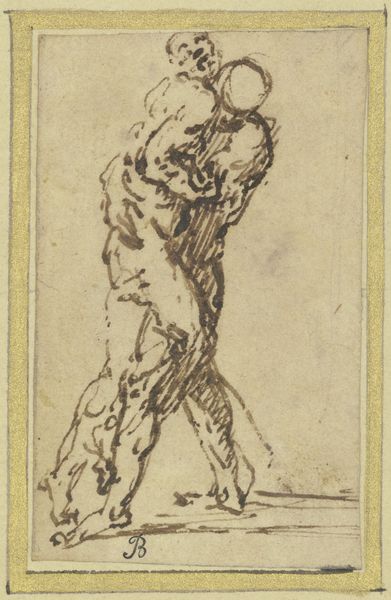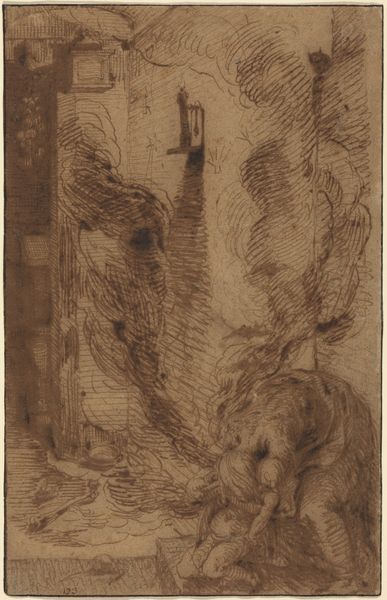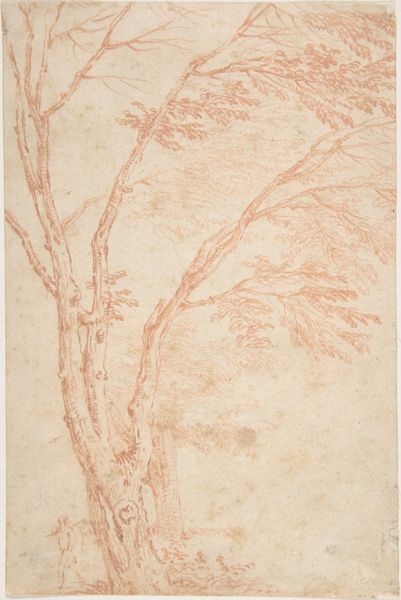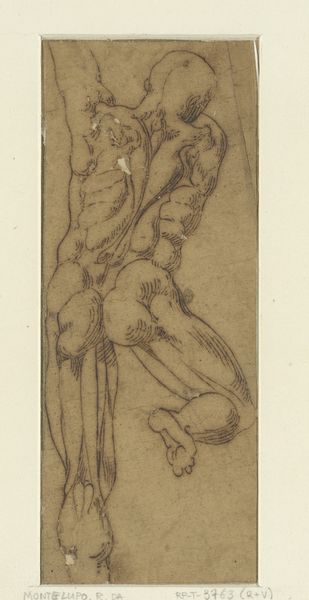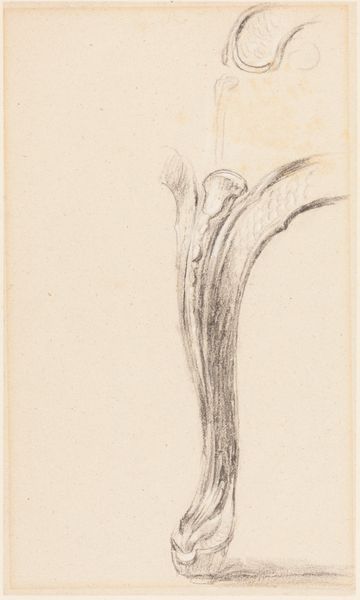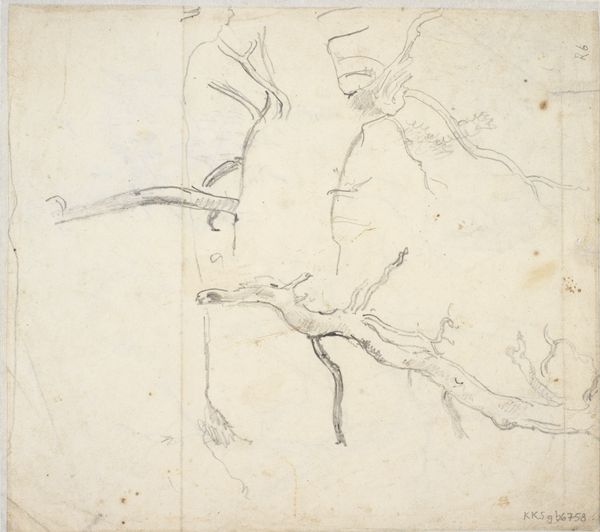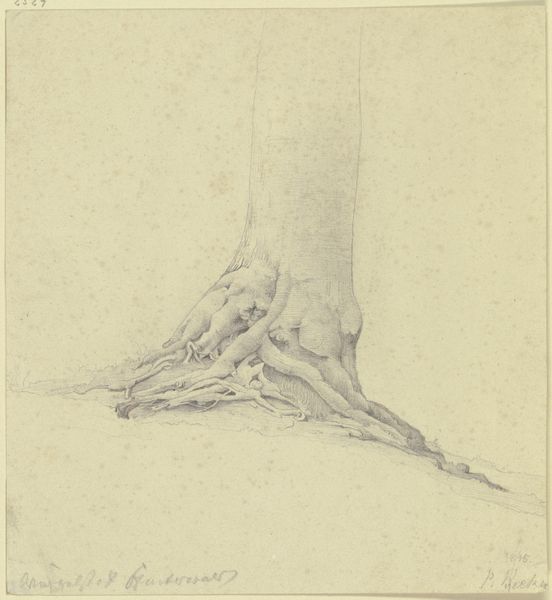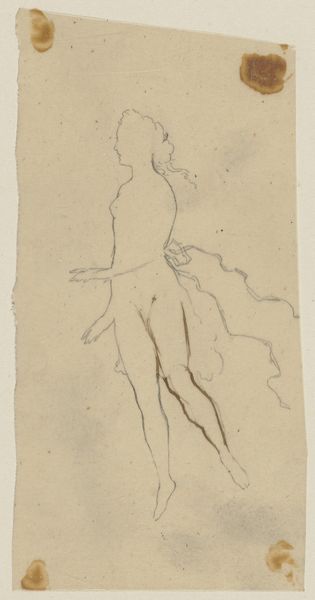
drawing, print, paper
#
drawing
#
narrative-art
#
baroque
# print
#
figuration
#
paper
#
line
#
history-painting
Dimensions: 132 × 67 mm
Copyright: Public Domain
Curator: This is Salvator Rosa’s Study for Polycrates’ Crucifixion, created around 1662. It’s currently held here at the Art Institute of Chicago. Rosa captured this scene using pen and brown ink, as well as brown wash, over black chalk on cream laid paper. What's your immediate take? Editor: Raw. Visceral. Makes me think of the flayed Marsyas. The scratchy lines and dark wash create this overwhelming sense of agony, really capturing a man at the edge of human endurance. I keep expecting him to scream. Curator: Indeed. Rosa, during the Baroque period, was known for his dramatic history paintings. Here, he is exploring the subject of Polycrates, a 6th-century BC tyrant of Samos. The scene captures the gruesome method of his execution. Remember that this piece was made not long after the Thirty Years' War, during a time of tremendous political and social upheaval. Editor: It’s the rawness that truly grips me, particularly when viewed in light of Rosa’s era. He clearly relishes exploring humanity's shadow. What message did the artist intend, portraying political violence so bluntly during such turmoil? Curator: Art historians see this sketch as both an artistic study in perspective and anatomy and a political commentary. Polycrates, despite his initial good fortune, suffered a cruel end. For Rosa and his contemporaries, Polycrates symbolized the fragility of power and the inevitability of justice, themes that resonate particularly strongly after years of brutal war. Rosa wasn’t just showing us violence; he was warning against tyranny. Editor: The intense detail devoted to rendering a tortured human figure makes me uneasy, almost as if the viewer were asked to inspect this person and find the justification for his agony. This isn't about some remote tyrant of old—it’s about everyman crucified by forces beyond his control. Curator: And this ambiguity may be intentional. Rosa challenges viewers to consider the relationship between power, justice, and cruelty. We might think about how similar political messages are presented through different forms today, through graphic novels or protest art, which force society to consider violence. Editor: It leaves you pondering on something truly dark. Rosa's willingness to engage with such raw emotional pain transforms it, and us in turn. I’m really feeling it, to be honest. Curator: Absolutely, it's a complex study of the era. Thank you for sharing that emotional perspective.
Comments
No comments
Be the first to comment and join the conversation on the ultimate creative platform.

